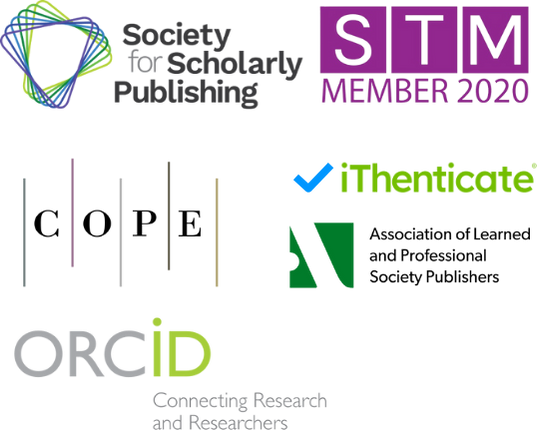Foucault's Panopticon Theory in the Design of Classroom Space and Layout: A Critical Examination and Future Prospects
DOI:
https://doi.org/10.71222/bg59xy82Keywords:
classroom design, panopticon theory, surveillance, student autonomy, flexible learning, critical pedagogyAbstract
This study adopts Michel Foucault's Panopticon theory as an analytical framework to explore how the design of classroom spaces and layouts functions as a mechanism of power that profoundly influences student behavior, autonomy, and overall learning experiences. The paper begins by elucidating the core concepts of the Panopticon theory and its metaphorical operation within educational institutions, revealing how the traditional "rows of desks" classroom layout, through centralized surveillance and heightened visibility, compels students to internalize disciplinary practices — thus producing what Foucault terms "docile bodies". Subsequently, the study examines the design philosophy underpinning modern flexible learning spaces and its positive impacts on student engagement, while critically noting that, in the absence of supportive pedagogical practices, such flexibility may devolve into a new form of covert discipline. In the digital era, emerging technologies such as artificial intelligence surveillance have given rise to a "digital panopticon", which presents novel challenges to student privacy and autonomy. Finally, the study proposes resistance strategies for both educators and students and delineates the design principles of emancipatory learning spaces, asserting that genuine educational reform requires not merely physical alterations but also a deep and sustained critical reflection on the essence of education, the dynamics of power, and the construction of subjectivity — with the ultimate goal of cultivating students' critical consciousness and autonomy.
References
1. R. Dai, M. K. E. Thomas, and S. Rawolle, “Revisiting Foucault’s panopticon: how does AI surveillance transform educational norms?,” Br. J. Sociol. Educ., pp. 1–19, 2025, doi: 10.1080/01425692.2025.2501118.
2. M. Musa, “Space in Michel Foucault’s work and its intersection with Henry Lefebvre’s production of space,” HBRC J., vol. 21, no. 1, pp. 353–375, 2025, doi: 10.1080/16874048.2025.2503525.
3. E. Taylor, Surveillance Schools: Security, Discipline and Control in Contemporary Education. Springer, 2013, doi: 10.1057/9781137308863.
4. C. Deed, T. M. Lesko, and V. Lovejoy, “Teacher adaptation to personalized learning spaces,” Teach. Dev., vol. 18, no. 3, pp. 369–383, 2014, doi: 10.1080/13664530.2014.919345.
5. N. Breakfast, A. Kwitshi, and P. Johnson, “The ideological construct of terrorism: A Foucauldian perspective of power and discourse,” J. Afr. Foreign Aff., vol. 9, no. 2, 2022, doi: 10.31920/2056-5658/2022/v9n2a8.
6. M. Haugaard, “Foucault and power: A critique and retheorization,” Crit. Rev., vol. 34, no. 3–4, pp. 341–371, 2022, doi: 10.1080/08913811.2022.2133803.
7. E. K. Feder, “Power/knowledge,” in Michel Foucault. Routledge, 2014, pp. 55–68. ISBN: 9781003060963.
8. S. Higgins, E. Hall, K. Wall, P. Woolner, and C. McCaughey, The Impact of School Environments: A Literature Review. London: Design Council, 2005.
9. L. Hamilton, “Banish the Graveyard: How Does Classroom Layout Affect Students’ Engagement?,” in Reflective Practice in Teaching: Pre-Service Teachers and the Lens of Life Experience, pp. 21–25, 2019. ISBN: 9789811394744.
10. N. Stock, “Classroom architecture and the gaze,” Discourse: Stud. Cult. Polit. Educ., vol. 45, no. 4, pp. 521–535, 2024, doi: 10.1080/01596306.2024.2351564.
11. Z. Wang and P. Du, “The logical connotation of discipline layout and Chinese practice,” Sci. Technol. Rev., vol. 39, no. 3, pp. 123–129, 2021, doi: 10.3981/j.issn.1000-7857.2021.03.012.
12. L. Benade, “Flexible learning spaces: Inclusive by design?,” N. Z. J. Educ. Stud., vol. 54, no. 1, pp. 53–68, 2019, doi: 10.1007/s40841-019-00127-2.
13. S. Alterator and C. Deed, “Teacher adaptation to open learning spaces,” Issues Educ. Res., vol. 23, no. 3, pp. 315–330, 2013.
14. S. Nemorin, “Post-panoptic pedagogies: The changing nature of school surveillance in the digital age,” Surveillance Soc., vol. 15, no. 2, pp. 239–253, 2017, doi: 10.24908/ss.v15i2.6033.
15. S. S. Chen, T. P. Lam, K. F. Lam, et al., “Youths’ attitudes toward open discussion of suicide, preferred contexts, and the impact of Internet use: An exploratory sequential mixed-methods study in Hong Kong,” Int. J. Soc. Psychiatry, vol. 69, no. 3, pp. 575–586, 2022, doi: 10.1177/00207640221123394.
16. M. Birnhack and L. Perry-Hazan, “School surveillance in context: High school students’ perspectives on CCTV, privacy, and security,” Youth Soc., vol. 52, no. 7, pp. 1312–1330, 2020, doi: 10.1177/0044118X20916617.
17. D. Preuveneers, G. Garofalo, and W. Joosen, “Cloud and edge based data analytics for privacy-preserving multi-modal en-gagement monitoring in the classroom,” Inf. Syst. Front., vol. 23, no. 1, pp. 151–164, 2021, doi: 10.1007/s10796-020-09993-4.
18. M. Foucault, “Discipline and punish: The birth of the prison (an excerpt),” in Coronavirus, Psychoanalysis, and Philosophy, Routledge, 2021, pp. 23–26. ISBN: 9781003150497.
Downloads
Published
Issue
Section
License
Copyright (c) 2025 Yuanlei Song, Husaini Bin Yaacob (Author)

This work is licensed under a Creative Commons Attribution 4.0 International License.


